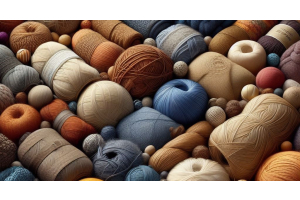
Embark on a captivating journey into the world of rugs and minimalism, curated by Aryahita, where each rug tells a story that transcends mere design. Discover the timeless allure of minimalist spaces and the fascinating nuances woven into our rugs.
1. Subtle Statements: Aryahita Rugs in Minimalist Spaces

Rugs have been a fundamental part of human societies for hundreds of years, not merely serving as ornamental items but also representing cultural wealth. Aryahita’s minimalist rugs seamlessly fuse modern design principles with this abundant historical narrative. These minimalist rugs, with their understated design and simple elegance, pay homage to the centuries-old tradition of rug making while also embracing the simplicity and functionality of modern design. They serve as a testament to the enduring relevance of rugs in human culture and the ability of design to evolve and adapt over time. Aryahita’s minimalist rugs are more than just home decor; they are a harmonious blend of past and present, tradition and innovation, narrating a story that spans centuries.
2. Texture and Tone: Elevating Minimalist Decor with Aryahita

In the field of design psychology, it’s well established that muted colors and subtle textures can induce a sense of calm and tranquility. Aryahita’s rugs, carefully designed with these principles, not only augment minimalist decor but also aid in fostering serene and stress-free environments. This is because muted colors are less visually demanding, allowing the mind to relax and focus on other elements in the space. Additionally, textures, especially those found in rugs, can stimulate our sense of touch, a sensory experience that can further enhance feelings of calm and comfort. Furthermore, according to environmental psychology, our surroundings can significantly impact our mood and behavior. Therefore, a minimalist decor with muted tones can reduce visual clutter, leading to lower stress levels and improved mental well-being. Aryahita’s rugs, with their muted tones and subtle textures, serve a dual purpose - they enhance the aesthetic appeal of a space while also promoting psychological comfort and well-being.
3. Functional Elegance: Aryahita Rugs as Practical Accents

Aryahita rugs offer more than just visual appeal; they also contribute to improving your well-being. Their plush, inviting textures offer a tactile experience that can uplift your mood and overall sense of comfort, positioning them as more than mere functional accents in minimalist decor. In addition to their aesthetic role, these rugs also serve a practical purpose. They can help in noise reduction by absorbing sounds, making your living space quieter and more peaceful. Furthermore, rugs can provide thermal insulation, especially in colder climates, by retaining warmth in the room, thus contributing to energy efficiency. They also add a layer of safety, reducing the chances of slips and falls on hard flooring. Therefore, Aryahita rugs, with their functional elegance, not only enhance the visual appeal of minimalist settings but also contribute to creating a safer, quieter, and more comfortable living environment.
4. Harmony in Simplicity: Creating Cohesive Spaces with Aryahita

These rugs, beyond their visual allure, serve as more than mere floor coverings; they are conduits of harmony within minimalist spaces. Let us delve into the rich tapestry of their significance.
Historical Threads: Rugs have an ancient lineage, dating back to the 3rd or 4th millennium BC. Nomadic tribes in Central Asia wove woolen fabrics on simple looms, creating textiles for clothing, blankets, tents, and saddle covers. These early fabrics, adorned with geometric patterns and animal motifs using natural dyes, laid the foundation for what we recognize today as flat-woven kilims. However, it was the emergence of the knotted-pile carpet around the 1st millennium BC that revolutionized rug making. By tying knots of wool around warp threads, artisans crafted raised surfaces with intricate designs and textures. The Pazyryk carpet, discovered in Siberia, exemplifies this ancient art—a Scythian masterpiece from the 5th century BC, adorned with vivid colors and motifs of deer and horsemen.
Psychological Resonance: Minimalism, with its ethos of simplicity and essentialism, seeks balance and tranquility. Aryahita’s rugs align seamlessly with this philosophy. Their understated textures evoke calm, while their presence weaves a subtle narrative. Within minimalist spaces, color choices matter. Bold hues disrupt the harmony, but Aryahita’s rugs—often in serene tones—enhance the overall balance. The interplay of negative space and rug design fosters a sense of openness and mindfulness, promoting well-being. These rugs become silent storytellers, whispering histories of craftsmanship and cultural identity, inviting contemplation in every room.The Weave of Well-Being: Beyond aesthetics, Aryahita’s rugs contribute to our psychological and emotional states. The tactile experience—the softness underfoot—connects us to the earth, grounding our senses. As we walk upon these woven narratives, we absorb their energy, perhaps unknowingly. The choice of materials matters: wool, silk, and natural dyes carry centuries of tradition and symbolism. In minimalist spaces, where every element counts, Aryahita’s rugs create a serene and balanced atmosphere, inviting us to pause, reflect, and find solace in simplicity.
Experience the convergence of history, design psychology, and well-being as Aryahita's curated collection seamlessly achieves simplicity, making each rug an essential piece in the art of minimalist living.










